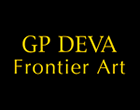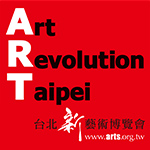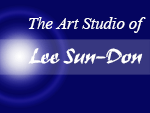-
Academic Activities:
2011.09
Speech with Impromptu Performance of Totemic Energy Oil Painting on “Art, Market, and Life” at Academy of Art, Harbin University of Science and Technology, China.
-
2011.09
Visiting Professor, Academy of Art, Harbin University of Science and Technology, China.
-
2010.01
Speech with Impromptu Performance of Totemic Energy Oil Painting at National Art Museum of Ukraine, Kiev, Ukraine.
-
2010.01
Invited Lecture Tour with Impromptu Painting to seven education and research
institutes of The Russian Academy of Arts, Moscow and St. Petersburg, Russia.
-
2009.4
Tour Lectures at Peking University, Sichuan Fine Arts Institute, Raffles Design Insititute in Beijing.
-
2008.4
Delivering the thesis "Totemic Energy Oil Painting vs. Life Science" at the international conference Toward a Science of Consciousness 2008, organized by the Center for Consciousness Studies, University of Arizona, April 8-12, at the Tucson Convention Center, Arizona, USA
-
2008.4
Presenting theses and exhibiting documents on “Totemic Energy Aesthetics: Mind-Awakening Creation” in Ohio University Gallery. The exhibited materials had become the permanent collection of the Kennedy Museum of Art, Ohio University, USA.
-
2008.3
Visiting Professor, School of Foreign Languages, Peking University, China.
-
2008.1
Visiting Professor, Department of Fine Arts, Xiamen University, China.
-
2007.10
Delivering the thesis "Existence from Non-Existence: Totemic Energy Oil Painting from a Buddhist Perspective," October 3, University of California at Los Angeles (UCLA), USA.
Art Critics:
Former Director of Venice Biennale(1980 & 1993), Prof. Achille Bonito Oliva
His art is not only rooted in abstract art in the strictest sense, since it reminds us of the inspirations revealed in the works of Balla, Kandinskij, Klee, Arp, Mirò and Matisse. His artistic research therefore has many references that are also symptoms of an extremely broad cultural horizon.
The work of Lee Sun-Don creates its own original and distinctive style through the combination of several philosophies in a language that escapes its formal order. Form is the threshold through which imagination declines its attitudes. In his case, painting is the tool that directs a linguistic universe not according a freezing project, but rather according to a bias for taking away, a subtle discipline based on the subtraction of certainty to the benefit of a rigorously structured probability.
-
IL Tempo Roma Newspaper, Italy
Master Lee is the “Modern Oriental Picasso.
-
Marcello Cazzaniga, Art Director, Camaver Kunsthaus International, Italy
We are pleased to announce that Lee Sun-Don has been selected by Camaver Kunsthaus International as the Top Artist of the world. He is the fifth artist in the whole world who has been awarded this highest honor since the 1940s.
-
Eleanor Heartney, Former President of AICA-USA, the American Section of the
International Art Critics Association.
Both the brushstrokes and the colors express various aspects of the Dharma.
Each [painting] contains a “totem”, a symbol of universal energy and harmony, apprehended in the process of deep meditation. Each totem is designed to spark a sense of enlightenment and transcendence in the viewer.
-
Denise Williams, Art Director, Santa Fe Art World
It is important for the artist to lay their soul on canvas, Master Lee achieves this. This is why his work is a conduit of energy, why it heals, why it is more than telling a well executed visual story and exactly why the work comes to life for it is a living entity from his hand, his soul.
-
Aldo Carrozza, Art Critic, Italy
The art that the Zen Master wishes to bring is a path that allows us to better understand the teachings of Buddha through certain symbolism. And in order to free one’s spirit and collect the true sense of everything, we might take the path of meditation.
-
Gaetano Ricco, Retired Professor in World Art, Italy
Instead of worrying about how Westerners perceive art, it becomes a medium to transmit to others the sense of mystery towards the universe.
-
Feng Bin, Curator/Director, Chongqing Art Museum, China
Lee…has unprecedentedly incorporated such seemingly unrelated elements – 5000-year-old Chinese culture, 2500-year-old Buddhism, and 500-year-long western arts – into one organic whole, allowing each to complement one another. Built upon his own wisdom and Buddhist cultivation, Lee infuse(s) Zen sensibilities into contemporary life: to disclose the mysteries of the universe and to bring awakening to modern people who are struggling their existence in the secular world.
-
Mao Daizong, Dean, The School of Fine Arts of Shandong College of Arts, China
When we are guided by Lee’s artworks to get in touch with the glory of the Buddha, will we still care about the techniques of his painting at all? Colors and lines all become the paths to and manifestations of Great Dao.
-
Zhang Liping, Chair, Department of Fine Arts, Art College of Xiamen University, China
His works are simple and yet inspiring; his employments of colors are bold and powerful and yet his brushstrokes are neither obsequious nor overbearing but balanced and proportioned. It is as if he is preaching within, leisurely, trying to share with us something behind a schema and beyond the paints and brushes





